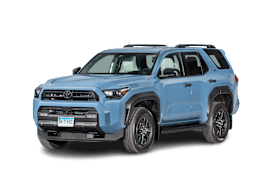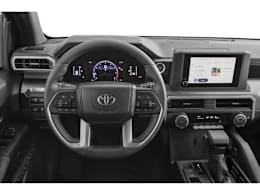Introduction
2025 Toyota 4Runner Proves Ready for Adventures
Redesigned SUV improves comfort, convenience, and capability, but trim choice mattersOverview
We have completed testing of the 4Runner. Stay tuned for the full road-test report.
True to its roots, the redesigned 2025 Toyota 4Runner is an off-road-capable SUV spun off a platform shared with the latest Tacoma, Land Cruiser, and other body-on-frame Toyota models.
Larger than before, the new 4Runner is the same length bumper to bumper as a Highlander, making it an inch longer than the redesigned Land Cruiser. The wheelbase is the same as both of those models, at 112 inches.
This sixth-generation 4Runner shares powertrains with the Tacoma, offering a choice of two turbocharged four-cylinder engines—with one being a potent hybrid.
There are 12 configurations total (combining trims and powertrains), including SR5, TRD Sport, TRD Sport Premium, TRD Off Road, TRD Off Road Premium, Limited, TRD Pro, and for the first time, Platinum and Trailhunter. Buyers will have many tough decisions to navigate their choices. There are two clear paths with on-road focused comforts and conveniences (SR5, Limited, Platinum) and a series of trail-prepared models that layer on mechanical upgrades, including some from leading aftermarket outfitters.
All 4Runners feature the robust Toyota Safety Sense 3.0 suite of active safety and driver assistance features.
To gain experience with the 4Runner’s off-road capabilities and potential on-road trade-offs, we rented a TRD Pro with the hybrid engine from Toyota. Below are our initial experiences with that version, which we will update later with insights from the lower-priced 4Runner SR5 that we bought for testing.
The 4Runner's final assembly point is Aichi, Japan.
It competes with the Ford Bronco and Jeep Wrangler.


























